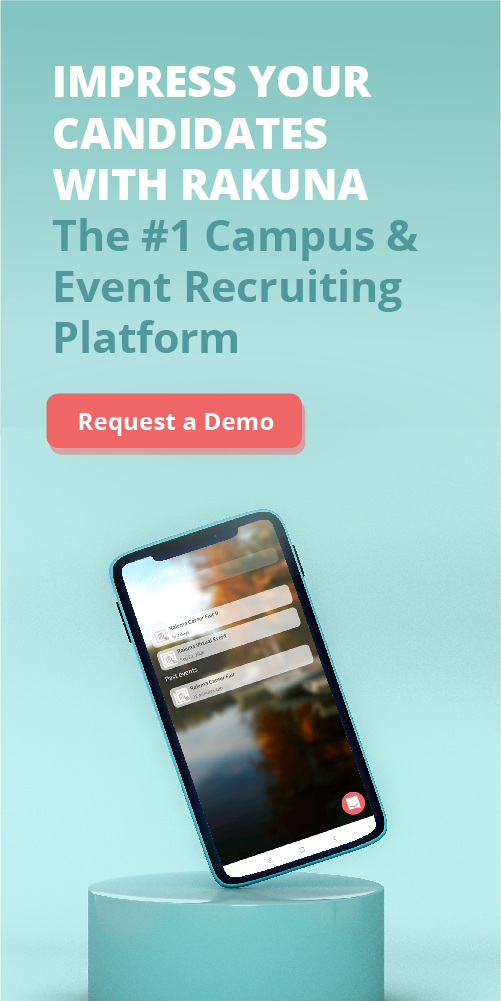Over 58.4% of the world population, or roughly 4,62 billion people, use social media. Millennials and Gen Z, the current and future primary workforce, spend much of their lives on social networks. Regarding this global phenomenon, recruiters and headhunters are focusing more on social media recruiting to discover and approach high-quality candidates.
Social media is a gateway to effective branding and recruiting, so if you’re not already in the game, you are missing out on many opportunities. This article will give you insights and tips to kickstart your social media recruiting campaigns.
What Is Social Media Recruiting?
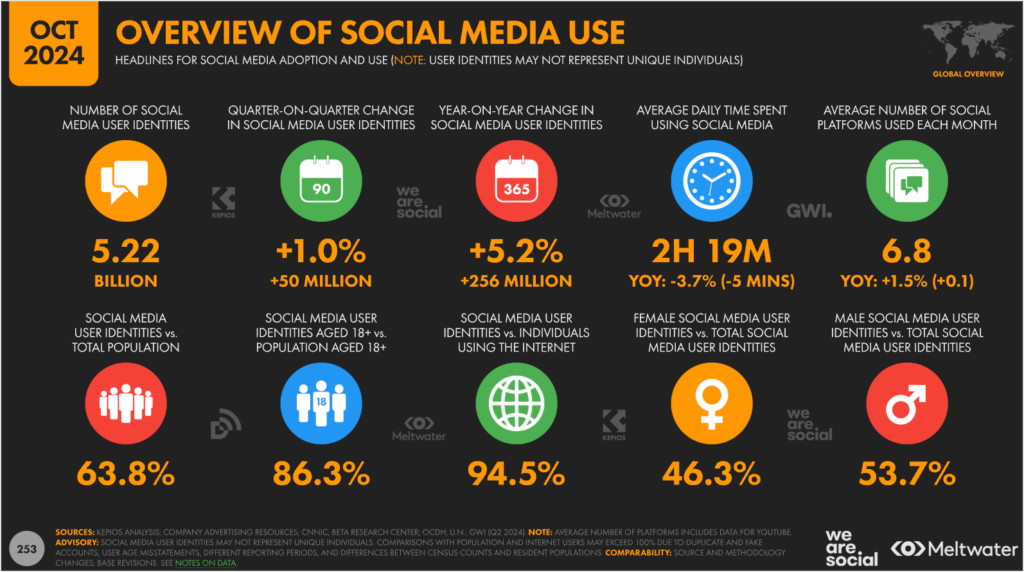
Social media recruiting involves leveraging platforms like Facebook, Twitter, LinkedIn, and Instagram to discover, attract, and hire talent. It serves as a complementary strategy to traditional methods like job boards and corporate website advertising, offering a multifaceted approach to talent acquisition.
Do you know:
According to Jeffrey Gottfried’s research published by the Pew Research Center, LinkedIn usage is notably higher among Americans with more formal education. For example, 53% of Americans with at least a bachelor’s degree use LinkedIn in 2024, compared to 28% of those with some college education and only 10% of those with a high school degree or less education. This reflects the largest educational disparity among social media platforms examined in the study.
(Americans’ Social Media Use, Jeffrey Gottfried, 2024)
Here’s what a successful social media recruiting strategy will bring to your organization:
- Boosts Recruitment Marketing Efforts: Social media amplifies recruitment marketing efforts, reaching millions of skilled candidates worldwide within seconds. Unlike traditional mediums, social media provides immediacy, scalability, and built-in tracking capabilities, enabling informed decision-making and targeted efforts.
- Helps Tailor Your Recruiting Efforts: Social media platforms offer diverse options for reaching specific candidate groups, allowing for precise targeting and efficient resource allocation. Each platform caters to unique audiences and cultures, necessitating tailored messaging and creative approaches for optimal engagement.
- Creates a Variety of Content: From written content to compelling imagery, video, and interactive formats, social media offers endless possibilities for content creation. Tailoring content to platform preferences enhances engagement, while repurposing content across platforms maximizes reach and impact.
- Promotes Your Employer Brand: Social media serves as a powerful tool for promoting employer branding and influencing job seekers’ perceptions and decisions. By showcasing company culture, values, and employee experiences, organizations can attract top talent and differentiate themselves in the competitive landscape.
- Increases Your Reach: Social media extends recruitment reach by targeting passive candidates, personalizing communication efforts, and leveraging paid advertising opportunities. Organizations can expand their candidate pool and improve hiring outcomes by reaching niche personas and industry experts.
- Helps Connect You with Candidates: Social media enables connections with passive candidates who may not be actively seeking opportunities. By engaging with specific audiences individually, recruiters can provide personalized experiences and enhance candidate engagement.
- Helps You Get to Know Candidates Beyond Their Resumes: Beyond traditional resumes, social media provides insights into candidates’ personalities, interests, and connections. This holistic understanding facilitates more informed hiring decisions and fosters meaningful connections with candidates.
In essence, social media recruiting integrates elements of employer branding and recruitment marketing to connect with both active and passive candidates in the digital spaces they frequent. It’s a dynamic strategy that empowers organizations to tap into diverse talent pools, enhance candidate engagement, and drive hiring success.
Key Benefits of Social Media Recruiting?
Social media recruiting has become an essential strategy for organizations seeking to enhance their talent acquisition processes. The benefits of this approach are supported by various reputable sources and statistics:
Expanded Reach and Visibility
Social media platforms provide access to a vast audience, enabling recruiters to connect with a broader talent pool. With over 4.62 billion people globally using social media—accounting for approximately 58.4% of the world’s population—recruiters can tap into a diverse range of potential candidates.

Take a look at Starbucks’ 2024 Instagram campaign showcased testimonials from employees from diverse backgrounds, sharing their personal experiences and stories. This initiative also boosted engagement with their DEI-focused social media content.
Enhanced Employer Branding
A strong presence on social media allows companies to showcase their culture, values, and work environment, which is crucial for attracting top talent through positive brand recognition. Notably, Glassdoor reports that 75% of active job seekers are likely to apply for a job if the employer actively manages its employer brand.
Accelerated Hiring Process
The rapid nature of social media interactions can lead to quicker identification and engagement with potential candidates, thereby reducing time-to-fill metrics. Social media has distinct advantages over traditional recruitment strategies, such as the ability to track the effectiveness of specific ads to inform future recruitment planning
Improved Candidate Screening
Recruiters can gain insights into a candidate’s personality, professionalism, and cultural fit by reviewing their social media profiles. This additional layer of information aids in making more informed hiring decisions.
Cost-Effective Recruitment
Social media recruiting offers a cost-effective alternative to traditional hiring methods. A study published on PubMed found that the odds of recruiting a participant through social media advertising per dollar spent were nearly double compared to non-social media methods, indicating higher efficiency and cost-effectiveness.
Which Social Media Platforms to Use for Recruitment
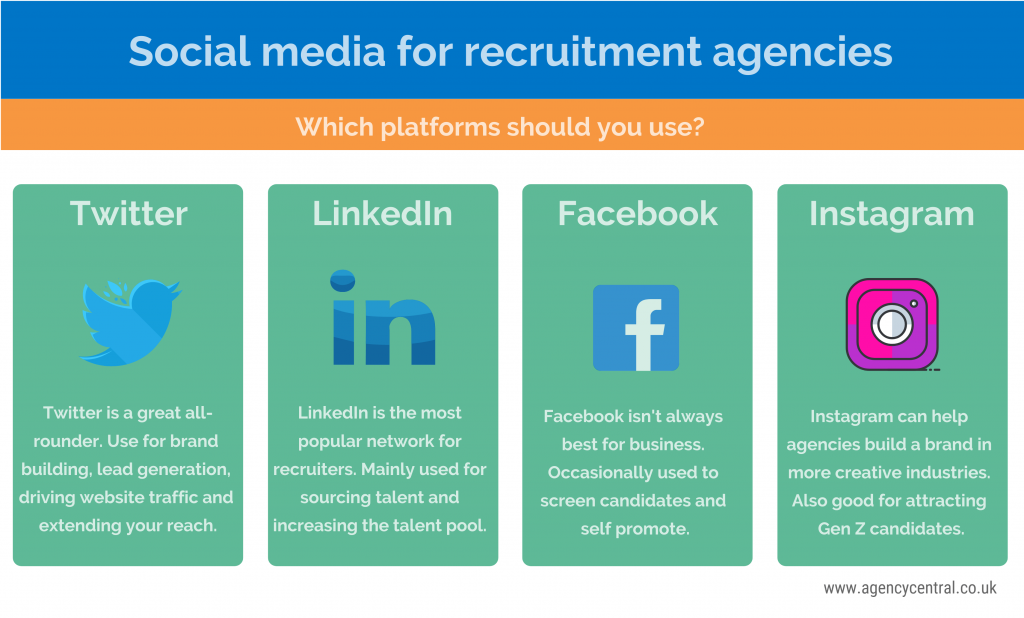
LinkedIn remains a central platform for recruiters, with up to 65 million candidates searching for jobs weekly. However, not all job seekers rely on LinkedIn, especially younger demographics who frequent various social media platforms. Recruiters must diversify their approach to reach these candidates effectively.
Platforms like Facebook allow job postings with text, images, and video, attracting predominantly older audiences. Instagram, favored by younger users, emphasizes visual content through posts, Reels, and Stories, offering insights into the company culture. LinkedIn, known for its professional networking, attracts a mix of age groups through its text and image-based posts.
Snapchat and TikTok appeal to younger demographics with their focus on image and video content. Snapchat utilizes hashtags for engagement, while TikTok offers innovative features like #TikTok Resumes for video resumes. Although limited in search functions, Twitter uses hashtags to target audiences across age groups.
Beyond these mainstream platforms, niche sites like Dribble for designers, GitHub for software developers, and Reddit for topic discussion of all kinds are also alternate sources of talent.
Core Metrics to Track

Understanding metrics is essential for measuring the effectiveness of your social recruiting efforts. By tracking key performance indicators (KPIs) and other metrics, recruiters can gauge their impact and refine their strategies accordingly:
Visibility and Audience Growth
These metrics measure how well your brand and content are reaching and attracting an audience:
- Profile Views: Tracks how many people visit your social media profile. A higher number indicates strong visibility and interest in your brand.
- Connections and Followers: Represent your audience size—those who are likely to engage with your posts and become candidates or brand advocates.
- Impressions: Counts the total number of times your post appears in users’ feeds. This is a great way to gauge your content’s overall visibility.
- Reach: Represents the unique number of people who see your post. It provides insight into how far your content is spreading.
- Audience Growth Rate: Tracks how quickly your follower count is growing. A steady increase shows your content is resonating with your target audience.
Engagement and Interaction
These metrics track how your audience interacts with your content and how effectively it drives actions:
- Mentions and Tags: Shows how often your account is tagged or mentioned in posts, comments, or replies. It reflects engagement and helps extend your visibility to a broader audience.
- Engagement: Tracks how users interact with your content, including likes, shares, comments, and mentions. Strong engagement signals interest and relevance.
- Click-Through Rate (CTR): Measures how effectively your social media posts drive traffic to your job listings, career pages, or other content. A high CTR indicates compelling calls-to-action.
- Conversion Rate: Measures the percentage of social media users who take desired actions, such as applying for a job or signing up for updates. A higher rate indicates effective recruitment campaigns.
- Response Rate: Analyzes how quickly and often candidates reply to your outreach or job postings. It reflects the effectiveness of your messaging strategy.
Quality and Impact
These metrics assess the effectiveness of your recruitment efforts, candidate quality, and the overall impact of your employer brand:
- Endorsements and Recommendations: Primarily a LinkedIn metric, these highlight candidates’ skills and credibility, making it easier to identify top talent.
- Brand Sentiment: Monitors how people feel about your employer brand using sentiment analysis tools. Positive sentiment boosts your appeal, while negative sentiment may signal areas for improvement.
- Candidate Quality: Assesses the caliber of candidates sourced via social media based on their skills, experience, and fit. Use this to refine your targeting and content strategies.
- Referral Rate: Tracks the number of candidates referred through social media, whether by employees or external advocates. It’s a measure of your referral program’s success and brand loyalty.
- Time-to-Hire: Monitors how long it takes to fill a role, from the first interaction to job offer acceptance. Shorter times suggest efficient processes and strong social media efforts.
Social Media Recruiting Pitfalls
While social media can be a powerful tool for recruiting, it’s essential to avoid common pitfalls that can hinder engagement with potential candidates and damage your recruitment efforts. Here are some social recruiting mistakes to steer clear of:
Platform Optimization & Accessibility
- Neglecting Mobile Optimization: With most social media users on mobile devices, failing to optimize content and application processes for mobile can frustrate candidates and cause drop-offs.
- Lack of Clear Application Pathways: If candidates struggle to find or use your application links, they’ll likely abandon the process. Ensure easy navigation with user-friendly links and clear instructions.
- Skipping Relevant Hashtags: Hashtags are a powerful tool for boosting your visibility. Use relevant ones to connect with candidates actively searching for opportunities.
Content Strategy & Branding
- Using a Generic Content Strategy: A one-size-fits-all approach doesn’t work. Tailor your content to fit the tone and style of each platform to maximize engagement and impact.
- Over-Reliance on Job Postings: Social media is for more than just job ads. Share insights, company culture, and industry news to keep your audience engaged and build relationships.
- Inconsistent Branding Across Platforms: Mixed messaging confuses candidates and dilutes your brand. Ensure a consistent tone, look, and message across all platforms.
- Not Encouraging Post Sharing: Amplify your reach by asking followers to share your posts. This simple step can help connect you with potential candidates through their networks.
Candidate Engagement & Relationship Building
- Ignoring Candidate Feedback: Candidate feedback is a goldmine for improvement. Whether it’s about job posts, company culture, or the application process, listen and adapt.
- Mismanaging Engagement Levels: Avoid extremes – don’t flood candidates with too many posts or messages, but don’t go silent either. Find a consistent and balanced engagement rhythm.
- Overwhelming Candidates with Messages: Excessive direct messages can feel intrusive. Respect candidates’ inboxes and focus on meaningful, timely communication.
- Overlooking Brand Sentiment: Monitor how your brand is perceived on social media. Address negative feedback quickly to maintain a positive reputation and attract talent.
- Misunderstanding Your Target Audience: Get to know your ideal candidates – what they value, where they are, and how they interact online. Tailor your strategy to meet them where they are.
- Failing to Follow Up: Attracting candidates is just the start. Timely and personalized follow-ups are essential to keep candidates engaged and create a positive experience.
Top 10 Essential Social Media Recruiting Strategies and Case Studies
Connect With the Right People
Before diving into recruiting, it’s crucial to create candidate personas tailored to the roles you want to fill. Picture your ideal candidate – what traits would fit seamlessly into your company culture? Balance that with the qualifications needed for success in the role. Take a moment to analyze where your recruitment process could use a boost and make that a priority in your strategy.
Remember, there’s an online community for nearly every niche. These platforms are teeming with potential candidates eager to showcase their skills and grow. Don’t underestimate the power of niche networks; explore Facebook and LinkedIn groups or relevant Subreddits. Within these communities, you’ll uncover top talents waiting to be discovered – diamonds in the rough. All it takes is a keen eye and proactive engagement to connect with them.
Scout out for Competitors and Candidates
Researching competitors and candidates is a vital step in refining your recruitment strategy. Here’s how to go about it effectively:
- Analyze Competitors’ Presence: Investigate which platforms your competitors utilize most effectively. Study the type of content they produce on each platform and how it resonates with their audience. By understanding their strategies, you can identify opportunities to differentiate your approach and attract top talent.
- Assess Candidate Behavior: Research where your target candidates spend their time online. Explore social media platforms, professional networking sites, and industry-specific forums to identify potential talent pools. Understanding where candidates congregate allows you to tailor your recruitment efforts to reach them effectively.
- Identify Untapped Resources: During your research, you may uncover overlooked platforms or communities where potential candidates gather. These untapped resources present valuable opportunities for talent acquisition. Expanding your reach beyond traditional channels allows you to access a diverse pool of qualified candidates.
By thoroughly researching competitors and candidates, you can gain valuable insights to inform your recruitment strategy and enhance your chances of attracting top talent.
Build An Online Reputation For Your Company
Millennials and Gen Z are known for their idealism, seeking companies whose values resonate with their own. For them, forming an emotional and ethical connection is crucial to committing to their work. Therefore, broadcasting your brand’s characteristics is essential to attract these candidates.
Here’s how you can implement this strategy:
- Know Your Company Inside Out: Dive deep into your company’s core values, culture, vision, and mission. For example, if your company values innovation, showcase how your team collaborates on cutting-edge projects that make a difference.
- Consistency is Key: Maintain a consistent voice across all your communication channels. For instance, if your brand persona is friendly and approachable, ensure your social media posts and recruitment emails reflect that tone consistently.
- Highlight Employee Experience: Share real-life stories and experiences from your employees. Feature employee spotlights on your website or social media platforms to showcase their achievements and contributions.
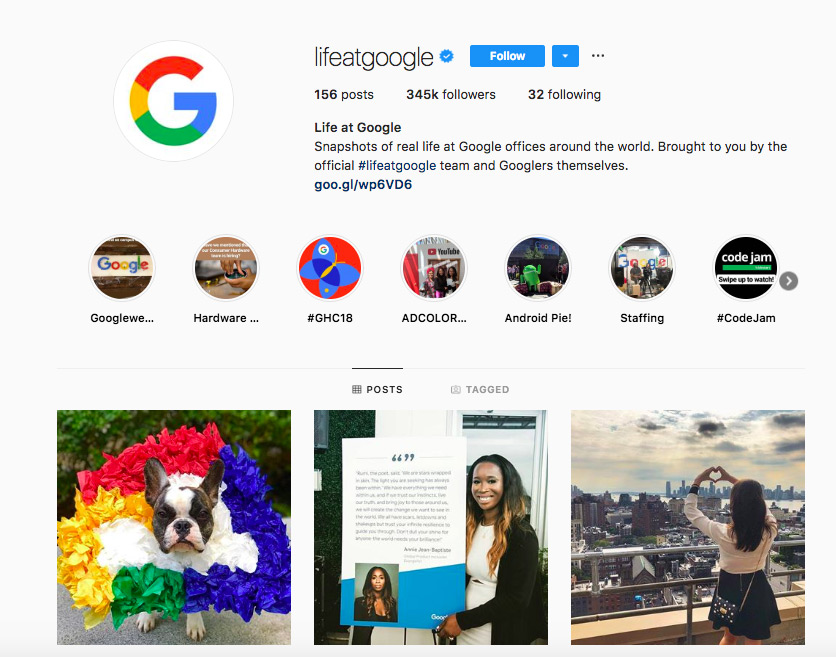
For inspiration, take a look at Google’s Instagram account, @lifeatgoogle. It’s a prime example of building a positive brand image in candidates’ minds. The account features moments and stories from Google employees, offering a glimpse into Google’s dynamic and enjoyable working environment.
Involve Your Employees in Sharing Posts on Social Media
Being popular on the Internet requires a lot of sharing. And popularity equals more potential candidates reached. Involving your employees in sharing posts on social media can significantly boost your recruitment efforts. Here’s why and how to leverage this strategy effectively:
- Harness the Power of Personal Connections: Personal recommendations carry immense weight in today’s digital age. Prospective candidates are more likely to trust the endorsements of friends and acquaintances than traditional advertisements. Encourage your employees to share your company’s posts and job openings on social networks to tap into their personal connections and expand your reach.
- Provide Social Proof: Job seekers often seek validation before applying to a company. By showcasing positive reviews, testimonials, and experiences your employees share, you provide valuable social proof that can sway candidates’ decisions. Highlight the benefits of working at your company through authentic employee stories and testimonials to attract top talent.
- Offer Incentives for Referrals: Motivate your employees to actively participate in your recruitment efforts by offering incentives for successful referrals. Consider providing bonuses or rewards for employees who refer qualified candidates who ultimately join the company. This encourages employees to advocate for your organization proactively and helps you attract high-quality talent.
Be Active on Multiple Platforms
While LinkedIn is a popular hunting ground for recruiters, it’s essential to diversify your approach. Relying solely on one platform limits your reach and may exclude potential candidates, especially younger demographics and passive job seekers who may not have a LinkedIn presence.
Expand your horizons wisely. Consider platforms like Instagram, which is known for its high user engagement rates. Facebook offers valuable business tools for insights and advertising. If visuals are your strength, explore Pinterest. And for those with a knack for compelling copywriting, Twitter can be a splendid choice.
Keep in mind that each platform has its unique characteristics and audience preferences. What works on Instagram may not resonate on Twitter, and vice versa. Tailor your content accordingly to maximize your impact.
Use Hashtags to Boost Your Online Visibility.
The “#” symbol connects content across the internet, making it easy for users to discover new posts. Think of hashtags as your way to get noticed by more people. They’re like a spider’s web, catching attention effortlessly.
To make the most of hashtags, first, find trending ones using analytics tools like Google Trend and Meta Ads Library. Then, pick ones that match your brand’s style and your audience’s interests. Stick to your style, but also use popular hashtags to reach a wider audience.
Choose hashtags that are short, easy to remember, and relate to your audience. If you can’t find one that fits, create your own. Make sure it represents your brand, and watch your visibility grow.
Use Social Recruiting Software
Utilizing social recruiting software is a step forward in simplicity and efficiency. As with other recruiting methods, leveraging technology can significantly enhance your workflow and effectiveness.
Social recruiting software can streamline various tasks, from syncing your company’s social media accounts to scheduling posts and automating responses. By centralizing these functions, you can save time and resources while maximizing your reach and engagement with potential candidates.
Some popular social recruiting platforms include:
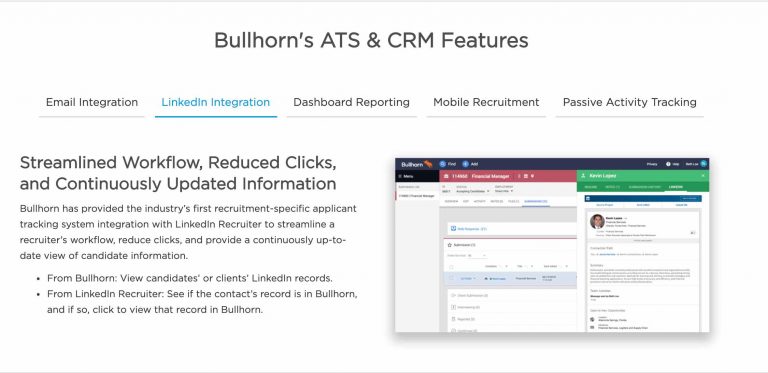
Specializing in customer relationship management, applicant tracking, and operational software for the staffing industry, Bullhorn allows recruiters to create and share job postings across multiple social media platforms and job boards. Its social media recruiting analytics provide valuable insights for recruiters, making it a standout choice among Bullhorn competitors.
Rakuna’s Recruiting CRM offers advanced capabilities for organizing and nurturing candidate relationships at scale. Recruiters can leverage automated workflows, personalized & automated email campaigns, candidate activity tracking, and insightful analytics to manage candidate pipelines and drive engagement effectively. By centralizing candidate data and communication, Rakuna enables recruiters to build stronger connections and convert leads into hires more efficiently.
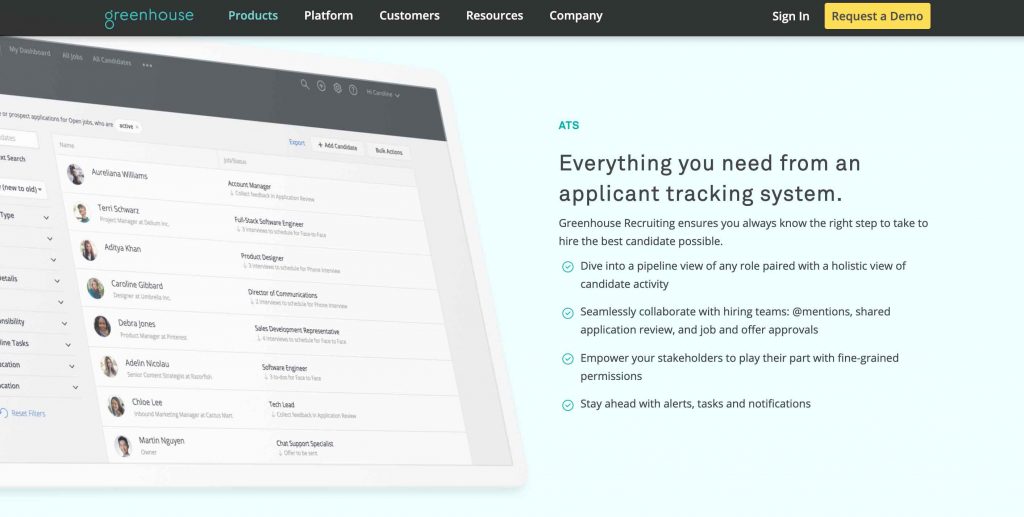
Offering a centralized dashboard for managing job seekers’ applications from various sources, Greenhouse utilizes an open platform with an API to streamline aggregation and organization.
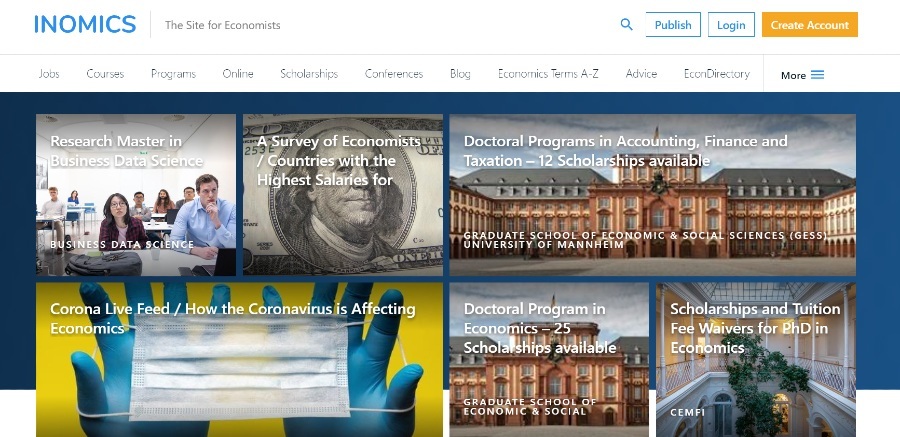
Beyond social recruiting, INOMICS serves as a hub for valuable information, advice, and career opportunities in economics and related fields. It provides effective channels for universities, research centers, and companies to recruit within a niche community of students, researchers, and professors.
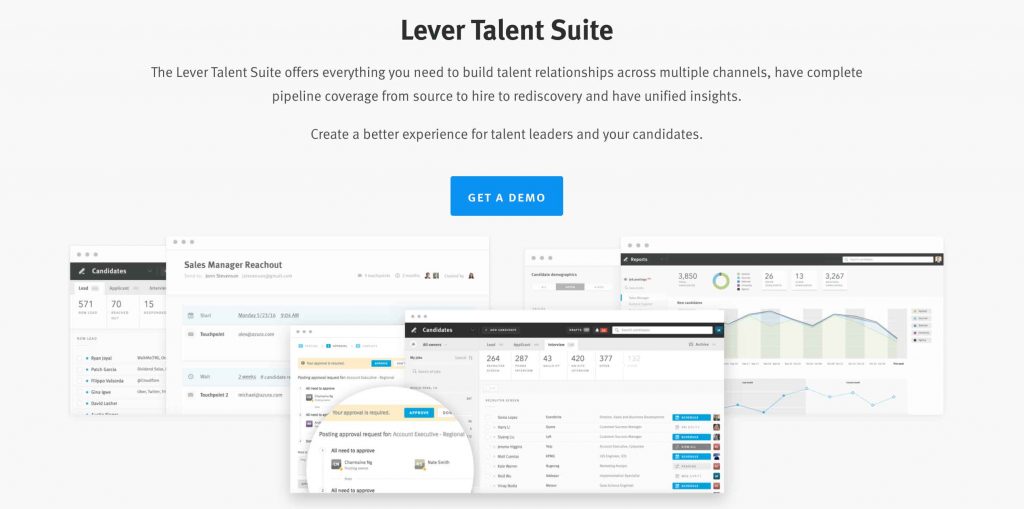
As a cloud-based solution, Lever combines applicant tracking system (ATS) and customer relationship management (CRM) functionalities into a single platform. It simplifies the sourcing, nurturing, and management of candidates for teams of all sizes.
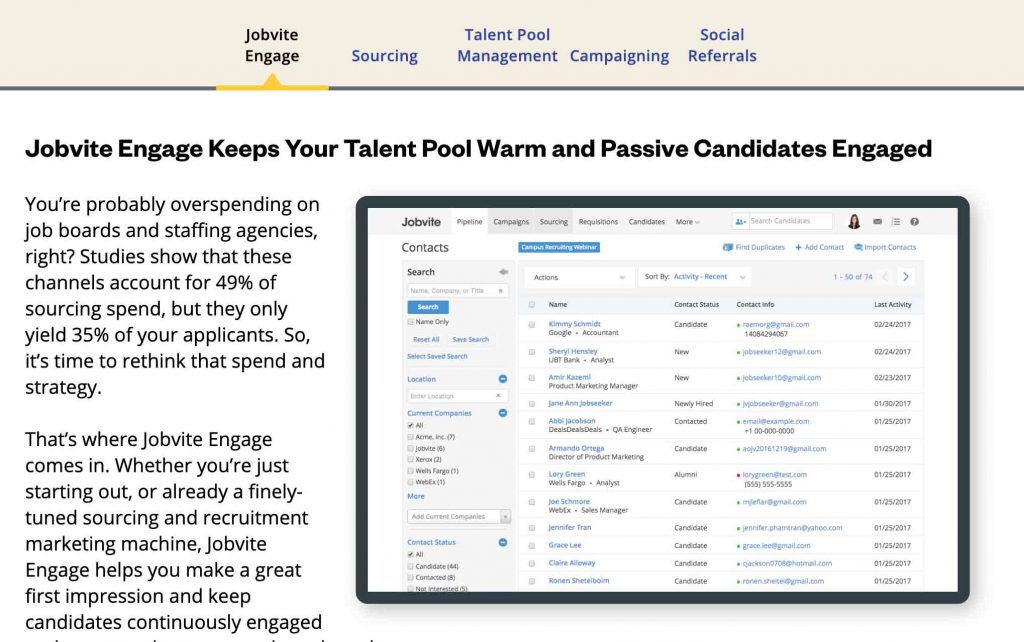
A cloud-based applicant tracking system (ATS), Jobvite facilitates the management of hiring processes, including job distribution, screening, interviewing, and offer management. Suitable for midsize and enterprise recruiting companies, it offers comprehensive features for efficient recruitment management.
Livestream Videos
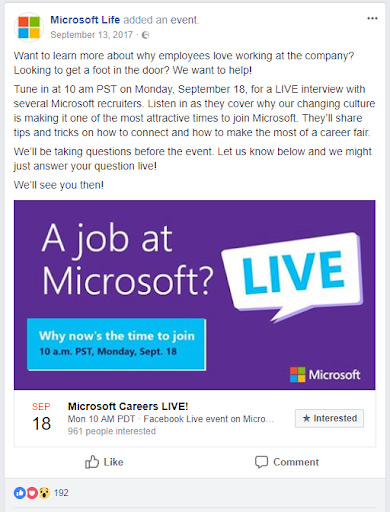
Livestream videos offer an engaging way to connect with potential candidates and foster meaningful conversations. By organizing live Q&A sessions, recruiters can provide tailored answers to specific questions and build rapport with their target audience.
This method is relatively simple to execute – all you need to do is schedule a live Q&A session as a Facebook event and share it across other relevant platforms. Take inspiration from successful examples like Microsoft Live, which hosts regular live sessions to engage with candidates. Regardless of your company’s reputation, events like these are bound to attract a diverse pool of candidates eager to engage and learn more.
Create a Separate Account For Recruiting
Before diving into creating a new account for recruiting, consider the following:
- Choose a simple and recognizable name for the account to make it easy for candidates to find and identify.
- Tailor the content to cater to the interests and needs of potential applicants, providing valuable insights into your company culture and available opportunities.
- Showcase your workplace culture periodically through engaging posts and behind-the-scenes glimpses to attract candidates who resonate with your values.
- Ensure that contact and application information is readily accessible, making it easy for candidates to connect and apply.
Optimize Your LinkedIn Page
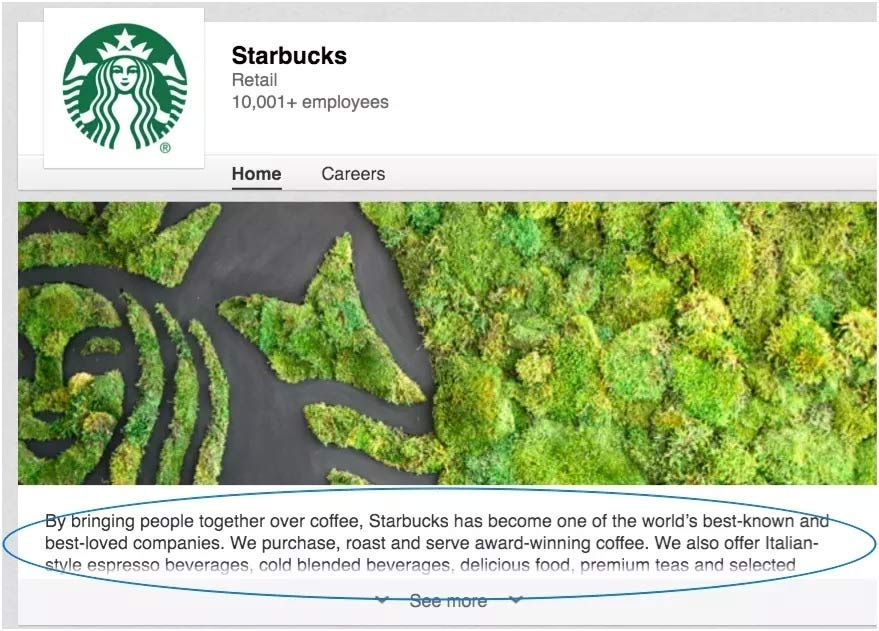
LinkedIn is the core social network platform for recruiting, offering unparalleled access to a vast pool of professional talent. Ensuring your company’s presence on this platform is optimized is essential for attracting top candidates and enhancing your employer brand.
To make the most of LinkedIn, consider the following tips:
- Fully complete your brand page: Your company’s LinkedIn page serves as a digital storefront, providing valuable information to potential candidates. Ensure your page is fully populated with relevant details, including a compelling description that captures your brand’s essence in the first 154 characters. This snippet appears in Google search results, so make it count.
- Optimize your description: Incorporate keywords that potential candidates may use to search for your company, balancing recruitment-focused terms with those aimed at marketing to customers. This ensures that your page is discoverable by both job seekers and potential clients.
- Use filters to refine candidate searches: With millions of professionals on LinkedIn, finding suitable candidates can be daunting. Leverage LinkedIn’s advanced search filters to narrow down your candidate pool based on criteria such as location, industry, experience level, and skills. This targeted approach helps you identify candidates who align closely with your hiring needs.
- Complete the “Company Specialties” section: Highlighting your company’s specialties provides insight into your core competencies and areas of expertise. This section serves as a snapshot of your organization’s strengths and can attract candidates with relevant skill sets.
Conclusion
The majority of your target candidates use social networks frequently for both recreational purposes and career prospects. Social media recruiting strategies are, therefore, crucial to building a good employer brand and reaching job seekers.
The ten tips mentioned above are just a starter. It’s your turn to pick one to start testing and decide what works best for your company. Do well and be the best in whatever niche you plan to go for!

